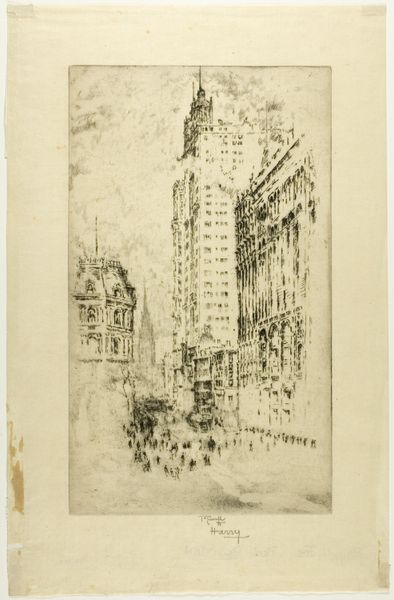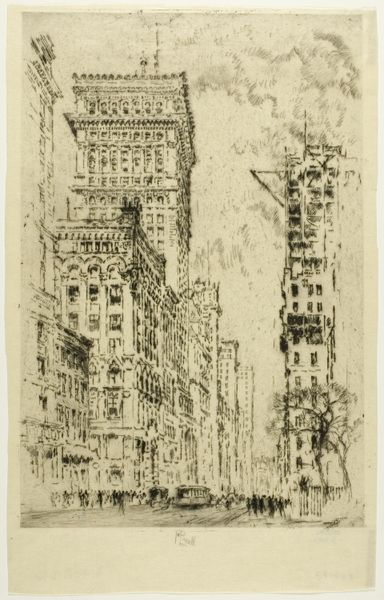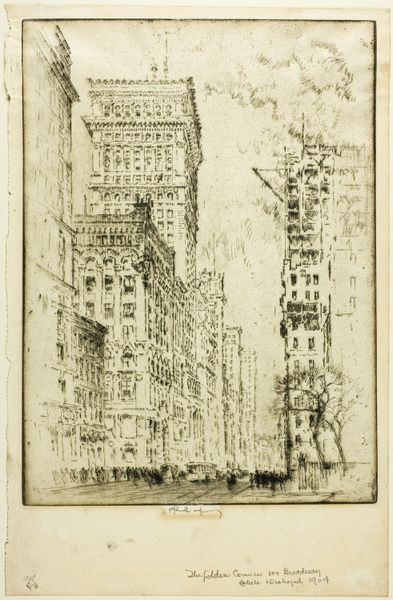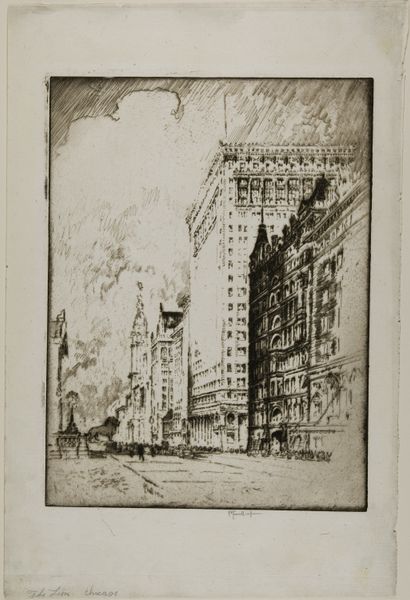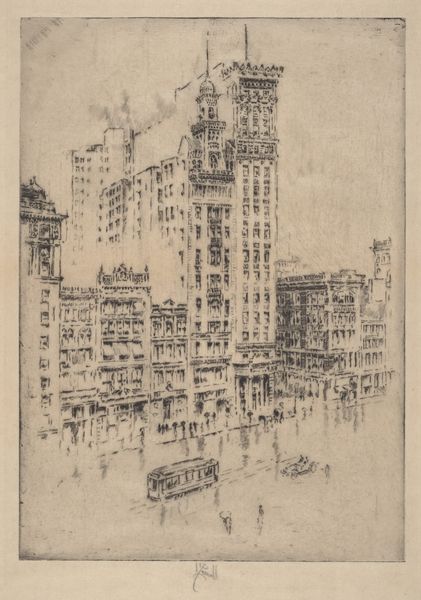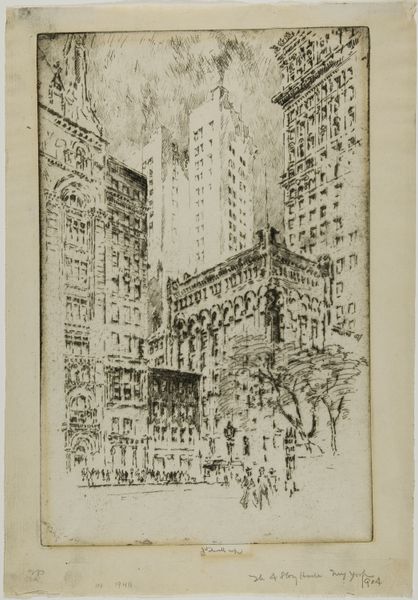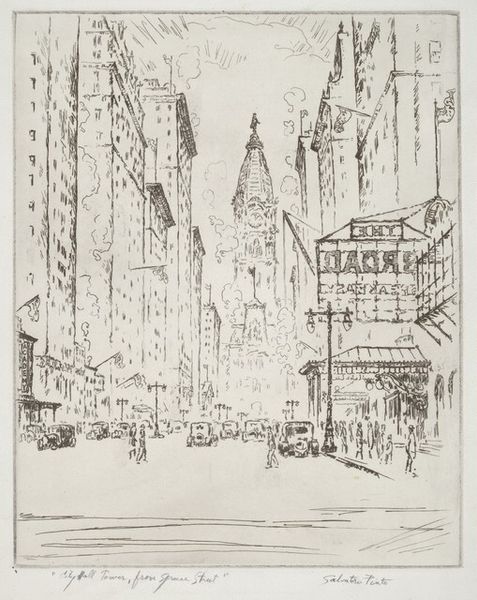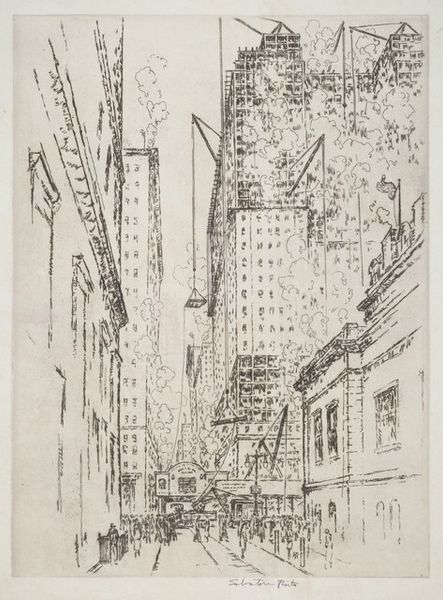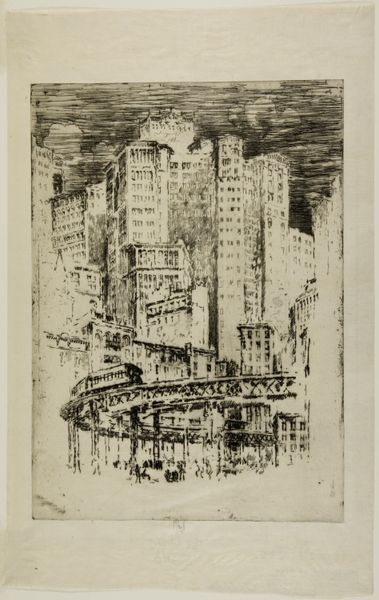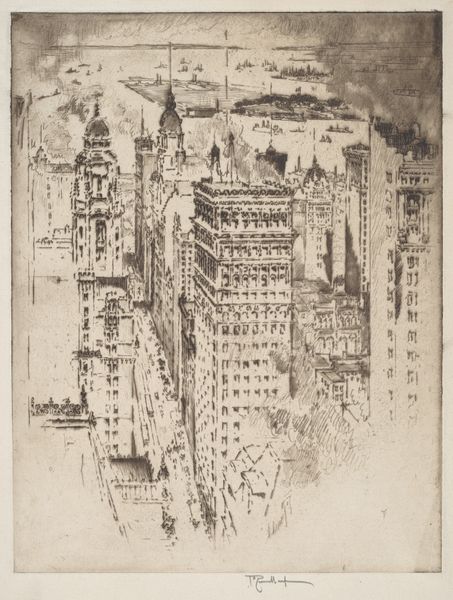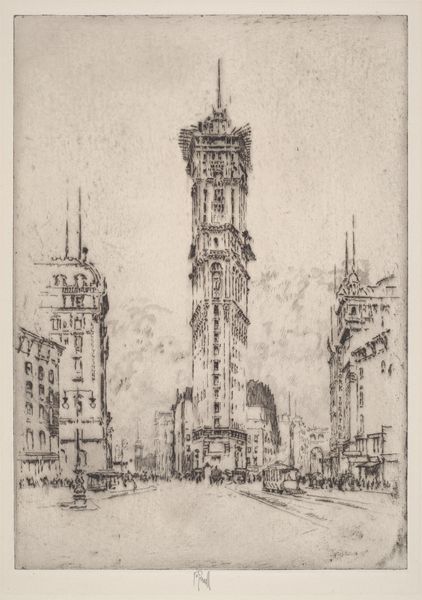
drawing, print, etching, paper
#
drawing
# print
#
etching
#
etching
#
paper
#
cityscape
#
modernism
Dimensions: 298 × 175 mm (image); 301 × 214 mm (plate); 394 × 271 mm (sheet)
Copyright: Public Domain
Curator: This etching by Joseph Pennell, titled "The Shrine", was completed in 1904 and offers us a glimpse into the evolving urban landscape of early 20th-century New York. Editor: Immediately striking is how the tonal range compresses and flattens space. It presents a kind of dreamscape. Do you feel the oppressive monumentality of the skyscrapers? Curator: Absolutely. Pennell's work often documented the rise of these architectural marvels, celebrating, and sometimes questioning, their impact on society. Etchings like this offered a widely accessible medium to propagate these ideas, shaping public opinion on urban development and American industrial prowess. Editor: The textures, though—that's what grabs me. The fine lines, the way he uses shadow to define form. Notice how the hazy rendering gives this relatively new city the weight of something ancient. There’s even something a little Piranesian about the composition, despite the stark difference in subject matter. Curator: He certainly taps into a sense of the sublime, associating early skyscrapers with classical structures and thus validating them. His technical skill allowed him to capture the nuances of light and shadow in this rapidly changing city. Notice how the buildings dwarf the people in the scene, reflecting contemporary anxieties about industrialization. Editor: I agree. I find the positioning of the viewer striking; the way we’re made to look upward invites both awe and perhaps, a touch of existential angst. And the contrast between the dark, brooding structures and the relatively bright street suggests that, in Pennell’s mind, urban life held a mixture of promise and threat. Curator: His perspective definitely framed the debate on modernity, solidifying the image of New York as a hub of innovation and ambition. But also, as a place of potential alienation. These cityscapes had a real effect on promoting skyscraper technology but also fed an important societal conversation around change. Editor: The perspective seems crucial. Even through a reproductive medium like etching, this art makes us feel like active participants, tilting our heads up towards a sublime yet possibly suffocating reality. Thanks to his artistry we gain some feeling for what it was like to stand amid this concrete and steel cataclysm in real time.
Comments
No comments
Be the first to comment and join the conversation on the ultimate creative platform.
